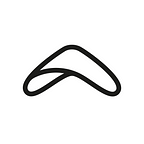Setting the right prices for rentals is a balancing act. Price your products too low, and you might see plenty of usage without turning any profit. Price them too high, and you’ll probably rent them out less frequently and attract fewer price-conscious customers.
In the end, rental companies have to do their homework. They have to consider purchase prices, depreciation, maintenance, and other expenses like shipping and delivery costs. However, there’s more to pricing than just running the numbers. Doing the math is necessary for calculating when you’ll break even, which should be part of the process. But it’s equally important to understand the playing field and study the market before pricing your rental equipment.
The first step to gaining this understanding is to outline the choices your customers have. You need to know their options. Spend some time thinking about the alternatives that could replace your product. Are you competing with customers buying equipment rather than renting? Or perhaps you primarily compete with companies that rent out similar products. In that case, check how much they charge and look for gaps.
In essence, there are two ways to determine the right price for your rental equipment: calculating cost plus margin and using that as your starting point, followed by researching the market and positioning yourself somewhere along the spectrum. While most rental companies use these techniques separately, they’re more powerful when combined. Let’s cover them in more detail, so you get a reliable strategy for pricing your rentals.
Looking in: Cost plus margin
The first approach, calculating your cost plus margin, helps you determine what you need to charge to run a profitable rental business. You can do this by figuring out the cost of ownership of your equipment (which includes the elements mentioned at the beginning, such as purchase prices, depreciation, maintenance, and other expenses). Once you know your break-even point, you can start looking at margins and set some revenue goals. If you need $40.000 to break even and want $40.000 in profits, you need $80.000 of revenue.
In the next stage, you can start playing with the numbers. For example, when you charge $80.00 per day for a product, you’d need to rent that piece out for 1,000 days. With an inventory of ten stock items, you’d need to rent them out 100 days each. Of course, this is a simplified example with only one product and without a discounted rate for longer durations. The point is that it’s about exploring the possibilities until you land somewhere that feels right.
While this is a relatively simple way to explore base prices, it’s not the only way to get there. And since this process works from the inside out, the formula doesn’t take your customers and competitors into account. That’s why this method alone might not be enough to pick the right number.
Looking out: Research the marketplace
Another approach to setting rental rates (and gaining more perspective in the process) is by doing market research. The goal is to get a view of standard practices in your rental industry and set a benchmark. You can do this by analyzing companies that rent out comparable products and how they position themselves. Are they a premium choice in the industry? Are they low-balling other companies? Or are they somewhere in the middle? Analyzing direct competitors makes you realize who you’re up against, and might even uncover opportunities you could have missed otherwise.
Besides studying who you’re up against, it’s helpful to gather insights about potential customers because, well, they’re the ones who are going to rent from you. Which prices are they willing to pay for rentals? How big of an influence is pricing in their decision-making process? Questions like these help you get inside the minds of your customers and make sure you come to a reasonable rate for your rental equipment. This method factors in external elements and helps you uncover pricing-related opportunities in your rental industry.
Moving forward and pricing your rentals
There’s no universal approach to pick the perfect price for rental equipment. Every business has a unique set of products, and every market requires a different strategy. The best advice is to do your homework and decide what’s best for you and your customers. After you’ve gained a deep understanding of your business and the market you’re operating in, you can make an informed decision and put a price on your products.
Interested in trying Booqable for your rental business? Learn more and get started with a free trial account.
